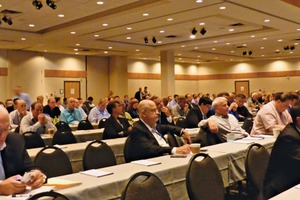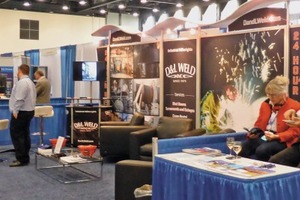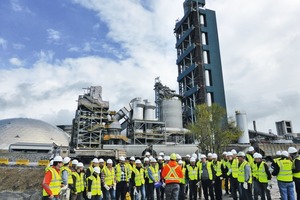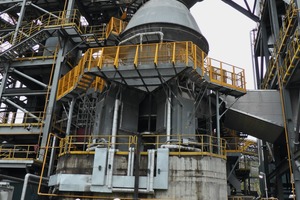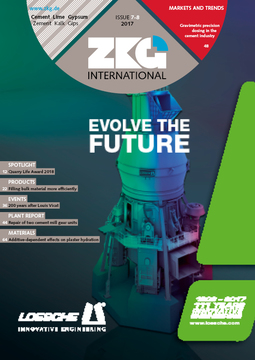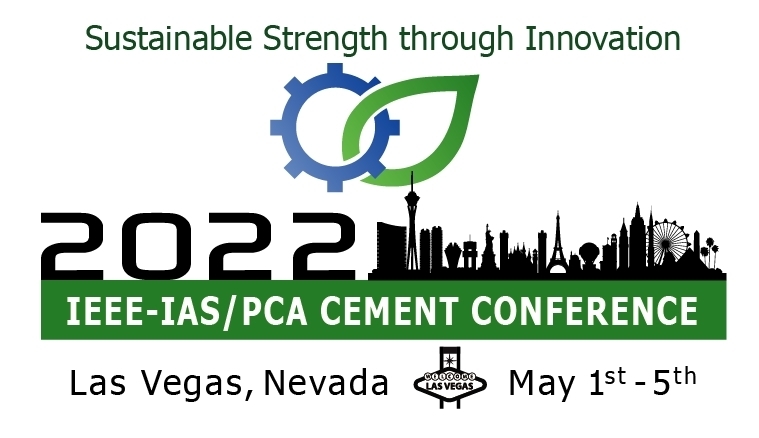59th Cement Industry Technical Conference
In bright sunshine, more than 850 delegates from 27 countries met from 21.05.-25.05.2017 for the 59th IEEE-IAS/PCA 2017 Cement Industry Technical Conference in Calgary/Canada. In addition to the comprehensive programme of advanced training and papers, a visit to the Lafarge Exshaw Plant had been arranged. At the accompanying exhibition, the participants were informed about the latest trends at more than 150 stands set up by the suppliers.
In her welcome address, Corinne Fields, IEEE-IAC CIC Chair, stressed the significance of the conference for education and training. The attendees obtained the latest information on cement production, health and safety at the workplace, new environmental legislation and other topics.
Heinz Knopfel, Conference Organizing Committee Chair, pointed out that cement and concrete play an important role at the Calgary venue, which can be seen at the construction sites in the city. He thanked the sponsors for contributing to the success of the event “This is a place to be!”
In his opening remarks, Michael Sebasto, IEEE-IAS CIC Vice Chair, looked forward to the comprehensive programme of papers. The 27 technically focused papers and three panel discussions provided a wide basis for discussion.
1 Cement consumption to increase over the next few years
Traditionally, Ed Sullivan, PCA, kicked off the papers with his view of the economic situation and that of the cement industry. Core point of his remarks were the consequences of the Trump initiatives for the economy and construction. He outlined three phases:
Stage 1: Economy & construction market prior to key Trump initiative (2017-2019.Q2)
Stage 2: Key Trump initiatives exert impact on economy & construction market (2019.Q3-end)
Stage 3: Market and monetary policy reaction (2020-end)
Since 2014, the unemployment rate has fallen from over 6.5 % to less than 5 % in 2017. More jobs meant more households, i.e. more detached homes and apartment blocks, and that was one of the biggest drivers of development in the construction sector. Infrastructure investments will be highly probable. Tax reform, immigration reform and the “building the wall” project will be realized in the years 2018/2019. Portland cement consumption will increase as a result of the planned infrastructural measures. But it will take time until the economic programmes take effect. In an infrastructural project, it took 22 months before the first tonne of cement was used. Sullivan sees the Portland cement consumption in Stage 1 at 2.3 % in 2016, 3.4 % in 2017 and 3.5 % in 2018. For Stage 2, he forecasts 5 % in 2019 and 7.7 % in 2020 and then, for Stage 3, 6.5 % in 2021.
Steve Coppinger, IEEE/IAS, then gave an introductory overview of the IEEE (Institute of Electric & Electronic Engineers), which as the world’s largest organization of technical professionals unites more than 423 000 members (117 000 students) in over 160 countries. The IEEE sponsors more than 1810 conferences annually, that is an average of five per day. The cement industry is included in the Department Process Industries (PID), which is one of four. The 1st Annual Cement Conference was held in 1959 in Allentown, PA; and was attended by 298 people. PCA and IEEE-IAS have been co-sponsors since 1996. The goal is to make this a “must attend” conference by working to attract more cement producers and young professionals.
2 Technical sessions
The first session “Environmental energy and sustainability” was opened by Robert Schreiber, Schreiber, Yonley & Associates with his paper “The new ozone NAAQS-potential impact on the cement industry”. The limit lowered from 75 ppb to 70 ppb will lead to significantly more counties becoming “nonattainment” areas. While at 75 ppb it was still 224 counties in 25 states, at 70 ppb it will be 241 counties in 33 states. For the cement industry, this means that 27 kilns could close and an additional 26 are at high risk of closure. $ 1.9 billion in capital investments required for compliance and loss of 900 cement industry jobs. Any significant increase in ozone precursor emissions (NOx or VOC) must be offset and the plant must plan on installing expensive control equipment. Cement plants located in areas in danger of going NA should start planning now on how to mitigate the challenges of compliance.
In further papers, amongst other things, technical possibilities for air purification such as SNCR and flexible catalytic solution were presented.
In the afternoon, “General practices” were on the programme, with papers on energy saving and efficiency improvement, reducing operating and maintenance costs. Dr. Caroline Woywadt, Gebr. Pfeiffer, presented in her paper “Grinding process optimization” the Modular Vertical Roller Mill (MVR) at the Lafarge Exshaw Plant. The MVR 5000 R4 4-roller raw material mill was then viewed during an excursion on Thursday. The guaranteed throughput rate of 340 Mt/h is currently exceeded with 360 Mt/h.
Parallel to this, an EE panel was held on the “Integration of NESHAP into everyday plant operations”.
Wednesday morning started with more topics, especially concerning the CO2 problem. In the afternoon, two parallel sessions were held. Topics were automation, drives and EEs. In two further panel discussions, “Perspectives on anchoring refractory castables and gunning mixes” and “GHG program update – California and Canada’s western climate initiative” were debated.
3 Tour of the Lafarge Exshaw plant
On Thursday, the group headed off in the direction of the Rocky Mountains to the Lafarge Exshaw plant around 80 km west of Calgary.
The cement plant situated very picturesquely in the Rockies is around 110 years old, in 1904 a limestone deposit was discovered and the construction of the plant was completed in 1908. The limestone pit is 350 m wide and 1 km long. According to Lafarge, the plant is the biggest cement plant in Canada and was extensively modernized and expanded from 2013. Newly installed was Kiln 6, with which the capacity could be increased from 1.3 million to 2.2 million metric t/a. Moreover, environmental upgrades were realized for Kiln 5, Kiln 4 was shut down and a new storage hall for the raw materials, called the EcoDome, as well as a new vertical raw mill were installed. During a tour of the plant, which comprised the quarry, VRM and EcoDome, PHT and Kiln/Cooler, VCM and shipping and CRO and “Lafarge Lane2”, the Group received a comprehensive overview of production.
Limestone is 75 % of the cement mix. Black shale, glacial till, bottom ash and sandstone are the other raw materials, they are stored in the Ecodome. The Ecodome is a geodesic aluminium dome, by CST Ind., stacker/reclaimer by Sinoma (1200 t/h), 110 m diameter, 33 m height.
For grinding of the raw materials, a new Gebr. Pfeiffer MVR 4 roller mill (3300 kW) was installed. Erection of the mill was completed in January 2015 and the project was commissioned in the spring of 2016. The ground material is stored in a raw mix silo and conveyed in a bucket elevator to Stage 1 of the cyclone system.
The KHD preheater type PR AF 9067/5 Pc is a 5-stage single-string preheater with SNCR and lime injection system. The production rate is 4200 Mt/d. The fuel is 100 % coal or natural gas (fuel split: 45 % kiln and 55 % calciner). The calcination rate of the precalciner is > 95 %. The new kiln 6 is a KHD Pier kiln (diameter: 5 m, length: 75 m, capacity: 4200 Mt/d, 4.5 RPM max, > 750 kcal/kg with 5 % bypass). The burner is a Pyro-Jet Burner for coal and gas.
A 5-roller PRC 420-5-ES crusher with a wide 4200 mm gap grinds the material to 0 to 30 mm particle size (240 t/h). The PFC 741 AW Cooler has a grate area of 114 m² and a capacity of 4200 t/d. From the cooler, the clinker goes to storage and then to the new finish mill (VCM). Here, clinker and gypsum are ground up to fine cement powder. The capacity is 245 t/h (3800 Blaine).
There is 160 kt clinker storage and 50 kt cement storage. The Calgary market is serviced by truck while most of the product is shipped by rail.
4 Outlook
The anniversary event, the 60th IEEE-IAS/PCA 2018 Cement Industry Technical Conference, will be held from 06.05.-10.05.2018 in the music city Nashville, TN/USA.
//www.cementconference.org" target="_blank" >www.cementconference.org:www.cementconference.org


